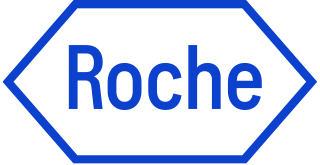“Only those who are crazy enough to think they can change the world actually do.”
– Henri Dunant, Founder of the Red Cross.
“Advancing neuroscience and rare disease research requires vision, strategic insight, and the ability to unite top scientific talent to address complex challenges. As a Lead Principal Scientist at Institut Roche, I develop and lead high-impact collaborations between industry and academia, ensuring that cutting-edge research translates into meaningful advancements for patients. With expertise in translational neuroscience, AI-driven biomedical research, and strategic R&D partnerships, I work at the intersection of science and innovation, identifying opportunities where emerging technologies accelerate discovery.”
Your role at Institut Roche and brief presentation of your professional background:
My background combines scientific expertise, business acumen, and communication strategy, shaped through extensive training in business administration and scientific journalism alongside my PhD in neuroscience from Pierre & Marie Curie University. Early in my career, I worked at Inserm, leading large-scale healthcare data projects across 83 medical centers, with a focus on data quality, integration, and analytics. At Institut Pasteur, I played a pivotal role in structuring high-profile research consortia and securing competitive innovation funding. Among these was the Inception program, a major initiative leveraging artificial intelligence, machine learning, and multi-omics approaches to better understand the emergence of diseases and uncover new therapeutic pathways. Inception’s broad scope—spanning multiple institutions and research disciplines—has set a new benchmark for how AI can drive biomedical innovation.
Since 2016, at Institut Roche, I have been dedicated to building strategic alliances that bridge fundamental research and pharmaceutical R&D. My role involves identifying promising scientific opportunities, navigating the complexities of academic-industry collaboration, and ensuring that partnerships lead to concrete advances in neuroscience and rare disease treatment. AI and data science are transforming the way we approach discovery, and I am particularly committed to integrating these technologies into collaborative research and R&D processes and frameworks.
I firmly believe that the most significant breakthroughs happen when expertise, data, and technology converge. By fostering synergies across disciplines, I strive to create the conditions for scientific excellence to thrive—delivering not only knowledge but real solutions for patients.
My Focus at Institut Roche:
Neuroscience and rare diseases Research partnerships, alliances set up and management.

